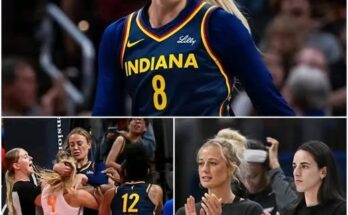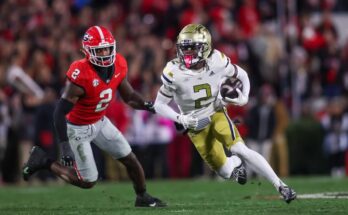Florida AD Scott Stricklin Breaks Silence on Conference Realignment, NIL Era, and How Revenue Sharing Could Reshape the Future of the Gators and College Sports.
Florida Athletic Director Scott Stricklin has found himself at the center of the storm that continues to reshape college athletics. From the dizzying whirlwind of conference realignment to the ever-evolving name, image, and likeness (NIL) landscape, to the emerging prospect of revenue sharing between athletic departments and student-athletes, Stricklin is facing unprecedented challenges while trying to maintain a sense of stability and competitive excellence for the Florida Gators. In an increasingly fragmented and financially driven environment, Stricklin opened up about these seismic shifts and what they mean not only for the University of Florida but for the entire future of collegiate sports.
Stricklin didn’t shy away from acknowledging the vast uncertainty gripping athletic departments across the country. The onset of the NIL era, once hailed as a new opportunity for student-athletes to profit off their personal brands, has instead turned into an unregulated arms race that, in his words, “changed the foundation of college sports.” Programs like Florida are now balancing long-standing commitments to student-athlete development and education with the pressure to keep up in a marketplace where players can command six- or even seven-figure deals to play for one school over another. Stricklin admitted that while NIL itself is a positive idea—rewarding athletes for their popularity and performance—its implementation has been chaotic, inconsistent, and in dire need of oversight.
He noted that Florida, like many major programs, has had to build new infrastructure to navigate this landscape. From hiring NIL-specific staff to coordinating with collectives and ensuring that deals stay compliant with NCAA and state regulations, the workload has skyrocketed. The result is that athletic departments now resemble professional sports franchises more than traditional collegiate operations. But with that comes new problems. Stricklin expressed concern that donors and boosters who once contributed to facility upgrades and scholarships are now redirecting their contributions to NIL collectives instead. This funding tug-of-war places pressure on athletic departments to do more with less while still trying to compete at the highest level.
The subject of conference realignment is equally complex. Florida remains firmly planted in the Southeastern Conference (SEC), but the college football world around it is shifting rapidly. The additions of Texas and Oklahoma to the SEC were only the beginning. With the Big Ten, ACC, and Big 12 all making aggressive moves in recent years, there is a growing sense that we are heading toward a power consolidation, where the traditional structure of Division I athletics could be dismantled in favor of a super league or a multi-tiered system. Stricklin acknowledged the appeal of such moves from a television revenue and exposure standpoint, but he also warned of the long-term damage this may cause to rivalries, geographic identity, and the collegiate model itself.
Stricklin emphasized that Florida’s leadership role in the SEC comes with the responsibility to be a stabilizing force amid the chaos. He argued that while the conference must evolve to stay competitive, it also needs to preserve what has historically made college sports unique—the emotional connection between athletes, fans, and communities. He used the example of the Florida-Georgia football rivalry, which dates back over a century and is deeply rooted in regional pride. Preserving games like that, he said, is essential to maintaining the soul of the sport even as money and media deals continue to drive change.
But perhaps the most consequential issue looming on the horizon is revenue sharing. In the wake of lawsuits, political pressure, and the growing recognition that student-athletes are generating billions in revenue, schools are bracing for a future in which they may be required—or choose—to share revenue directly with their players. For Stricklin, this represents the biggest philosophical and operational shift in college sports history. He believes that revenue sharing is inevitable and that the time has come for schools to plan for a model that blends compensation with education and opportunity.
However, making that model work will require a total overhaul of how athletic departments function. Stricklin outlined some of the dilemmas: If athletes become employees, will they be subject to being hired, fired, or unionized? Will Title IX apply to how revenues are distributed? How will non-revenue sports survive if most of the income is allocated to football and men’s basketball? These are questions with no easy answers, but Stricklin is convinced that failing to confront them now will only lead to greater disruption later.
He noted that Florida is beginning internal discussions to prepare for multiple future scenarios. These range from enhancing the benefits athletes receive—through education, health care, and career development—to building contingency budgets that account for potential revenue-sharing obligations. The university has also begun consulting with legal experts and financial analysts to understand the long-term implications of such a system. While no decisions have been finalized, Stricklin is adamant that transparency and preparation will be crucial as the landscape continues to evolve.
In Stricklin’s view, the biggest danger is not change itself, but unstructured change. Without a national governing body or collective leadership from the Power Five conferences, there is a risk that individual schools and conferences will adopt competing models that further fracture college athletics. He called for collaboration among administrators, coaches, lawmakers, and student-athletes to design a shared framework that ensures fairness, competitiveness, and sustainability.
Despite the challenges, Stricklin remains hopeful about the future of Florida athletics. He pointed to the university’s investment in world-class facilities, including the \$85 million football training center, as a sign of long-term commitment to excellence. He also expressed confidence in head football coach Billy Napier and the broader coaching staff to build programs that compete not just in the SEC, but nationally. Florida’s recent success in Olympic sports, including track and field, gymnastics, and baseball, is another reason for optimism, according to Stricklin. These achievements, he said, are the result of a culture that emphasizes both academic and athletic development.
Stricklin was also quick to praise Florida’s student-athletes for how they have adapted to the changing environment. Many have embraced the NIL era with professionalism and creativity, using their platforms to build brands, launch businesses, and give back to their communities. He mentioned several standout stories—athletes who started nonprofits, created podcasts, or partnered with local charities—as proof that NIL can be a force for good when handled responsibly.
Still, he cautioned that the arms race cannot continue unchecked. “At some point, we have to ask ourselves what kind of system we want to create,” Stricklin said. “Is it one where the richest programs dominate year after year, or one where opportunity and competition remain part of the DNA of college sports?” He believes that the answer will define the next generation of college athletics.
To that end, Florida is taking steps to ensure that student-athletes continue to receive holistic support. The university has bolstered its academic services, mental health resources, and leadership development programs to ensure that athletes are prepared for life beyond sports. These investments are designed to reaffirm the university’s mission even in an era where the line between amateur and professional athletics is becoming increasingly blurred.
Stricklin concluded with a message of balance. He believes college sports can evolve and modernize while still honoring the values that made them a cherished part of American culture. It will take compromise, vision, and leadership. But with the right plan, he believes the University of Florida and its athletic programs can thrive in this new era—not just by winning championships, but by serving as a model for how to manage change responsibly.
As the rest of the country watches the tectonic shifts unfolding in college sports, Florida finds itself at the crossroads. With Scott Stricklin at the helm, the Gators are navigating the uncertainty with a mix of realism and ambition. In the months and years to come, the choices made in Gainesville could echo across the nation, shaping the next chapter in the ever-evolving story of college athletics.



